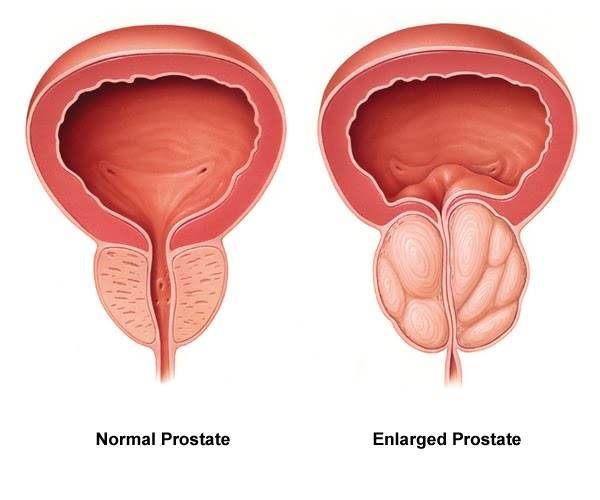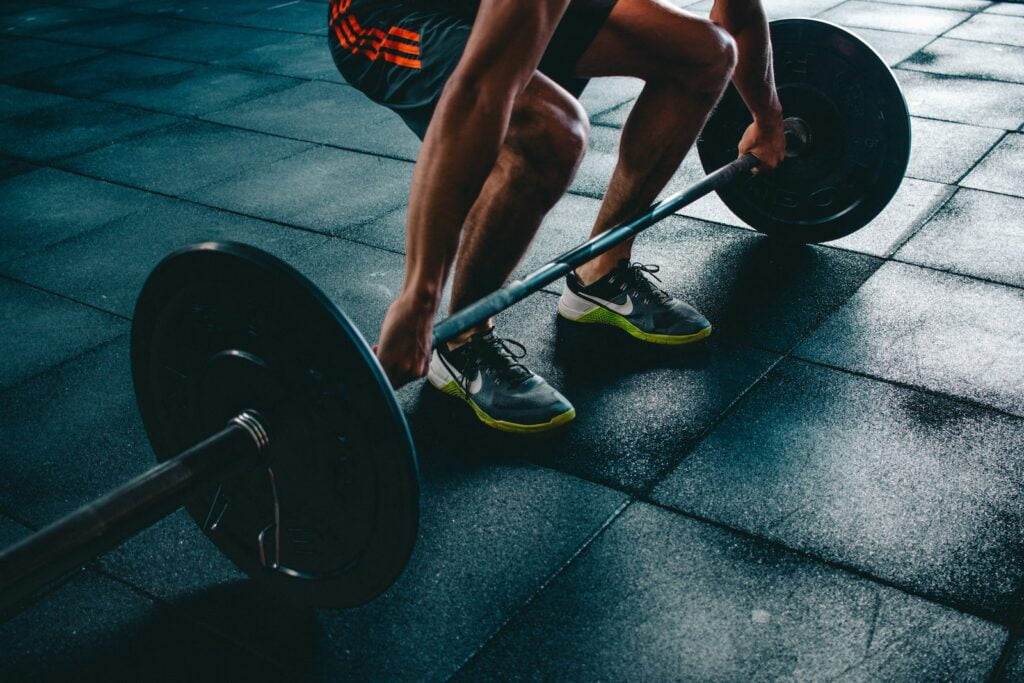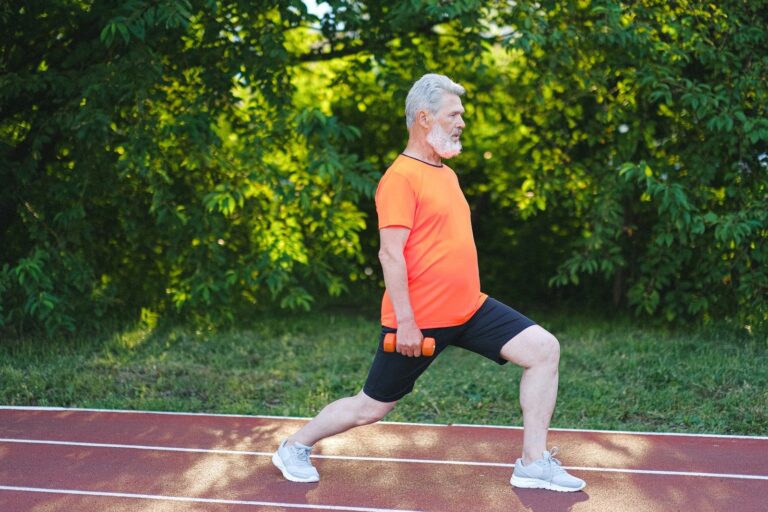Many men, especially older males, suffer from benign prostatic hyperplasia (BPH), an enlarged prostate. Exercise can help as well as medication and surgery. This article discusses the top 4 prostate-management exercises and the importance of regular exercise.
Table of Contents
Understanding Enlarged Prostate
Causes
The exact cause of BPH is not well-understood, but it’s believed to be related to hormonal changes that occur as men age. Testosterone and estrogen levels can affect the growth of prostate cells, leading to an enlarged prostate.
Symptoms
Common symptoms of BPH include:
- Frequent urination
- Difficulty starting or stopping urination
- Weak urine stream
- Incomplete bladder emptying
- Urinary urgency
Treatment options
Treatment options for BPH include medication, minimally invasive procedures, or surgery. Lifestyle changes, such as exercise, can also help manage symptoms and improve overall health.

The Importance of Exercise for Enlarged Prostate
Regular exercise can help reduce the symptoms of an enlarged prostate by promoting healthy blood flow, strengthening pelvic floor muscles, and supporting overall well-being. Exercise can also help maintain a healthy weight, which is important for reducing BPH symptoms, as excess body weight can put additional pressure on the pelvic area.
Top 4 Best Exercises for Your Enlarged Prostate
01. Kegel Exercises
Kegel exercises, also known as pelvic floor exercises, can help strengthen the muscles that support the bladder and prostate. These exercises are essential for improving bladder control, reducing urinary urgency, and enhancing sexual performance.
Understanding Kegel Exercises
Kegel exercises target the pelvic floor muscles, which are responsible for supporting the bladder, bowel, and prostate. Strengthening these muscles can help alleviate some of the symptoms associated with an enlarged prostate.
Why Kegel Exercises Matter
- Promote better bladder control
- Support prostate health
- Improve sexual function
How to Perform Kegel Exercises
Identify the Muscles
To locate the correct muscles, try stopping urination midstream. The muscles you use to do this are the ones you need to engage during Kegel exercises. Once you become familiar with the sensation, you can perform the exercises without urinating.
Contract and Relax
1. Contract your pelvic floor muscles for 3-5 seconds.u003cbru003e2. Relax the muscles for an equal amount of time (3-5 seconds).u003cbru003e3. Repeat this process 10-15 times, three times a day.
Maintain Proper Form
– Ensure you are isolating the pelvic floor muscles and not engaging your abdominal, buttock, or thigh muscles.u003cbru003e- Breathe normally throughout the exercises.u003cbru003e- Avoid holding your breath or straining.
The video is a guide to Kegel exercises for men, aimed at beginners who want to improve bladder control or overcome erectile dysfunction. The video explains the correct positions to do Kegel exercises, how to locate the pelvic floor muscles, and demonstrates step-by-step how to activate and contract them. The recommended routine is to start with gentle exercises and focus on proper technique, then gradually increase the intensity and duration of the exercises over time. The video also advises that it may take several months to see results.
Benefits of Kegel Exercises
Improved Bladder Control
Strong pelvic floor muscles can help reduce the frequency and urgency of urination, which is a common symptom of an enlarged prostate.
Reduced Urinary Urgency
By strengthening the pelvic floor muscles, Kegel exercises can help you gain better control over your bladder, reducing the sensation of needing to urinate urgently.
Enhanced Sexual Performance
Kegel exercises can lead to stronger pelvic floor muscles, which may result in improved sexual performance and satisfaction. They can also help with erectile dysfunction and premature ejaculation.
02. Aerobic Exercises
Aerobics increase cardiovascular health and pelvic blood flow. These workouts improve blood circulation, energy, stress, and weight management in men with enlarged prostates.
Understanding Aerobic Exercises
Aerobic exercises, also known as cardiovascular exercises, involve continuous movement of large muscle groups that increases your heart rate and oxygen consumption. These exercises improve your cardiovascular endurance, which can benefit your overall health and well-being.
Why Aerobic Exercises Matter
- Boost heart and lung health
- Support healthy blood flow
- Manage weight effectively
- Reduce symptoms of an enlarged prostate
Types of Aerobic Exercises
Brisk Walking
Brisk walking is an accessible and low-impact form of aerobic exercise that can be easily incorporated into your daily routine. Walking at a moderate pace can elevate your heart rate and provide cardiovascular benefits without putting undue stress on your joints.
Swimming
Swimming is an excellent full-body workout that engages multiple muscle groups while providing a low-impact exercise option. Swimming can improve cardiovascular fitness, increase muscle strength, and promote healthy blood flow.
Cycling
Cycling, either on a stationary bike or outdoors, is an effective aerobic exercise that can strengthen your leg muscles, improve cardiovascular endurance, and support weight management. Cycling is also a low-impact exercise, making it suitable for those with joint issues.

Jogging
Jogging is a higher-impact aerobic exercise that can significantly improve cardiovascular health, build endurance, and support weight loss. However, it’s important to progress slowly and use proper form to minimize the risk of injury.
Benefits of Aerobic Exercises
Improved Blood Circulation
Aerobic exercises can enhance blood flow throughout the body, including the pelvic area, which may help alleviate symptoms associated with an enlarged prostate.
Increased Energy Levels
Regular aerobic exercise can boost your energy levels and help you feel more alert and focused throughout the day.
Reduced Stress
Engaging in aerobic exercises can release endorphins, the body’s natural feel-good chemicals, which can help reduce stress and improve mood.
Weight Management
Aerobic exercises can help you burn calories and maintain a healthy weight. Excess body weight can put additional pressure on the pelvic area, exacerbating the symptoms of an enlarged prostate.
Incorporating Aerobic Exercises into Your Routine
Aim for at least 30 minutes of moderate-intensity aerobic exercise most days of the week. You can start with shorter durations and gradually increase as your fitness level improves. Listen to your body and choose activities that you enjoy to make exercise a sustainable part of your lifestyle.
03. Yoga and Stretching
Yoga and stretching exercises can help alleviate tension in the pelvic area and improve flexibility. These practices can lead to various benefits, including improved flexibility, reduced stress, enhanced body awareness, and strengthened pelvic floor muscles.
Understanding Yoga and Stretching
Yoga is an ancient practice that combines physical postures, breathing techniques, and meditation to promote overall health and well-being. Stretching exercises, on the other hand, focus on lengthening and relaxing muscles to increase flexibility and reduce tension.
Why Yoga and Stretching Matter
- Improve flexibility and mobility
- Support pelvic floor health
- Reduce stress and anxiety
- Promote overall well-being
Recommended Yoga Poses and Stretches
Cobra Pose (Bhujangasana)
Cobra pose is a gentle backbend that can help stretch the abdominal muscles and promote healthy blood flow in the pelvic area.
- Lie face down on your mat, with your legs extended and your palms flat on the floor next to your chest.
- Inhale and lift your chest off the floor, using your arms for support.
- Keep your hips and legs pressed into the mat and hold for 15-30 seconds, breathing deeply.
Pigeon Pose (Eka Pada Rajakapotasana)
Pigeon pose is a hip-opening stretch that can help release tension in the pelvic area and improve flexibility.
- Begin in a tabletop position on your mat.
- Bring your right knee forward and place it behind your right wrist, with your right foot angled toward your left hip.
- Extend your left leg behind you, keeping your hips squared and your left foot flexed.
- Hold the pose for 30 seconds to a minute, then switch sides.
Seated Forward Bend (Paschimottanasana)
Seated forward bend is a calming stretch that targets the hamstrings, lower back, and pelvic muscles.
- Sit on your mat with your legs extended in front of you.
- Inhale and lengthen your spine, then exhale and fold forward, reaching for your toes or ankles.
- Keep your back as straight as possible and hold the stretch for 30 seconds to a minute.
Happy Baby Pose (Ananda Balasana)
Happy baby pose is a gentle hip-opening stretch that can help alleviate tension in the pelvic area.
- Lie on your back on your mat.
- Bend your knees and bring them toward your chest.
- Hold the outer edges of your feet or your ankles and gently press your knees toward the floor.
- Hold the pose for 30 seconds to a minute, breathing deeply.
The video titled “How to Do Happy Baby Pose” on YouTube shows a demonstration of the pose. The video instructs to bend your knees to 90-degree angles, reach for your feet, and gently rock side to side before settling in and resting your back on the floor. You should continue to flex your feet as you hold the pose. After a while, release the pose, give your knees a squeeze, and relax onto the mat.
Butterfly Pose (Baddha Konasana)
Butterfly pose is a relaxing hip-opening stretch that can help improve flexibility and release tension in the pelvic area.
- Sit on your mat with your legs extended in front of you.
- Bend your knees and bring the soles of your feet together, allowing your knees to fall open to the sides.
- Hold your feet or ankles and sit up tall, lengthening your spine.
- Gently press your knees toward the floor, feeling a stretch in your inner thighs and hips.
- Hold the pose for 30 seconds to a minute, breathing deeply.
Benefits of Yoga and Stretching
Improved Flexibility
Yoga and stretching exercises can increase your flexibility and range of motion, which can help reduce the risk of injury and improve overall function.
Reduced Stress
Practicing yoga and stretching can help you relax and release tension, leading to reduced stress and improved mental well-being.
Enhanced Body Awareness
Yoga and stretching can help you develop greater body awareness, allowing you to identify areas of tension and improve your posture and alignment.
Strengthened Pelvic Floor Muscles
Certain yoga poses and stretches can engage and strengthen the pelvic floor muscles, which can support prostate health and alleviate symptoms of an enlarged prostate.
Incorporating Yoga and Stretching into Your Routine
Start by incorporating a few of the recommended poses and stretches into your daily routine, holding each pose for the suggested duration. Gradually build up your practice and explore other yoga poses and stretches that target the pelvic area. Always listen to your body and modify poses as needed to ensure a safe and effective practice.
04. Resistance Training
Resistance training can help build muscle strength and support overall health. Incorporating resistance exercises into your fitness routine can lead to various benefits, such as increased muscle strength, improved balance and stability, enhanced metabolism, and effective weight management.
Understanding Resistance Training
Resistance training, also known as strength training or weight training, involves exercises that challenge your muscles by applying an external force or resistance. This resistance can come from body weight, free weights, resistance bands, or machines.
Why Resistance Training Matters
- Build and maintain muscle mass
- Support bone health
- Improve functional fitness
- Complement other exercises for a well-rounded fitness routine
Types of Resistance Exercises
Squats
Squats are a compound exercise that targets multiple muscle groups, including the quadriceps, hamstrings, glutes, and lower back.
- Stand with your feet shoulder-width apart and your toes pointed slightly outward.
- Lower your body as if you were sitting in a chair, keeping your chest lifted and your knees tracking over your toes.
- Push through your heels to return to the starting position.
Lunges
Lunges are a lower-body exercise that works the quadriceps, hamstrings, glutes, and calves.
- Stand with your feet hip-width apart.
- Take a step forward with your right foot and lower your body until your right thigh is parallel to the floor and your left knee is hovering just above the ground.
- Push through your right foot to return to the starting position, then repeat with the left foot.
Leg Presses
Leg presses are a machine-based exercise that targets the quadriceps, hamstrings, and glutes.
- Sit on the leg press machine with your feet flat on the platform, hip-width apart.
- Push through your heels to extend your legs, being careful not to lock your knees.
- Slowly lower the weight back down to the starting position.
Deadlifts
Deadlifts are a compound exercise that works the entire posterior chain, including the hamstrings, glutes, and lower back.
- Stand with your feet shoulder-width apart, with a barbell resting on the ground in front of you.
- Bend at your hips and knees to lower your body and grasp the barbell with an overhand grip.
- Keeping your back straight, push through your heels to stand up and lift the barbell off the ground.
- Lower the barbell back to the ground, maintaining a straight back throughout the movement.

Benefits of Resistance Training
Increased Muscle Strength
Resistance training helps build and maintain muscle mass, which can improve your overall strength and functional fitness.
Improved Balance and Stability
Strength training can enhance balance and stability by strengthening the muscles that support your joints.
Enhanced Metabolism
Building muscle mass through resistance training can boost your metabolism, helping you burn more calories at rest.
Weight Management
Resistance training can help you maintain a healthy weight by increasing lean muscle mass and promoting a higher metabolism.
Incorporating Resistance Training into Your Routine
Aim to include resistance training exercises in your fitness routine 2-3 times per week, targeting all major muscle groups. Begin with lighter weights and gradually increase resistance as your strength improves. Always use proper form and consult with a fitness professional if you’re unsure about technique or need guidance on creating a resistance training program.
Exercise Precautions and Tips
Before starting any exercise program, consult with your healthcare provider, especially if you have any underlying health conditions. Follow these tips for a safe and effective exercise routine:
- Start slowly and gradually increase the intensity and duration of your workouts.
- Warm-up and cool-down with gentle stretches to prevent injury.
- Listen to your body and stop exercising if you experience pain or discomfort.
- Stay consistent and aim for at least 30 minutes of moderate-intensity exercise most days of the week.
Conclusion
Managing an enlarged prostate can be challenging, but incorporating regular exercise into your daily routine can provide significant benefits. Kegel exercises, aerobic activities, yoga and stretching, and resistance training can all help alleviate symptoms, improve overall health, and enhance your quality of life. Always consult with your healthcare provider before starting a new exercise program, and remember to listen to your body and exercise at a pace that feels comfortable for you.
FAQs
Can exercise cure an enlarged prostate?
While exercise cannot cure BPH, it can help manage symptoms and improve overall health. Regular physical activity may also reduce the need for medication or surgery.
How often should I exercise to see benefits for my enlarged prostate?
Aim for at least 30 minutes of moderate-intensity exercise most days of the week. Consistency is key to experiencing the benefits of exercise for BPH.
Can I perform Kegel exercises if I have urinary incontinence?
Yes, Kegel exercises can help improve bladder control and reduce urinary incontinence. However, it’s important to consult your healthcare provider before starting any new exercise program.
Are there any specific exercises I should avoid if I have an enlarged prostate?
Generally, most exercises are safe for individuals with BPH. However, it’s essential to consult your healthcare provider before starting a new exercise program, as they can provide guidance on which exercises are most suitable for your specific needs.
Can I do these exercises if I’ve had prostate surgery?
It’s important to consult your healthcare provider before starting any exercise program after prostate surgery. They can provide guidance on when it’s safe to begin exercising and recommend appropriate exercises for your recovery process.



